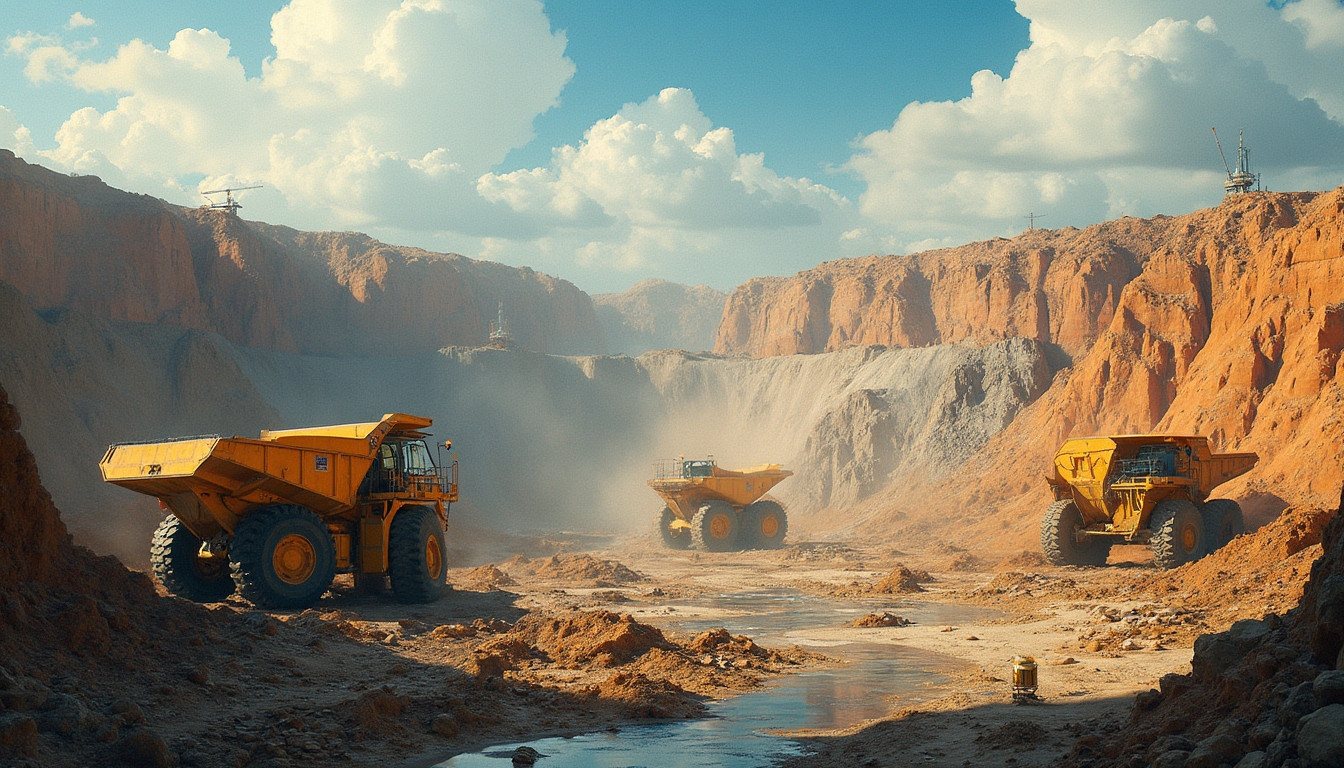Introduction to Ore Deposits and Formation
The aim of the "Ore Deposits 101 series" is to provide an accessible understanding for those not versed in technical jargon about ore deposits. It explains how these natural formations come into being, methods utilised for their exploration, evaluation procedures, and the mining processes involved. This series unveils the key characteristics of significant ore deposit types while introducing the terminology frequently used within the mining industry.
This 11-part series begins with an introduction to plate tectonics, the foundational element in comprehending how ore deposits form. It progresses through topics such as Mafic layered complexes and kimberlites, and features like Porphyry deposits that are rich in valuable metals. Other segments focus on structures like greenstone belts, known for gold and copper, and epithermal deposits characterized by their precious metal content. The series culminates with an examination of the exploration process, including tools and methodologies used.
Earth's Structure and Composition
Layers of the Earth
The Earth's composition includes several layers, with the core itself divided into a solid inner segment and an outer molten portion. Above the core lies the mantle, a region of hot, viscous rock, finally covered by the crust, the Earth's outermost layer. This layer's thickness and composition vary significantly across different regions.
Limitations of Direct Observation
Observations of the Earth's structure are limited by the maximum depth reached by humans—just 12.2 km via the deepest drill hole, representing a mere 0.2% of Earth's radius. This necessitates reliance on indirect methods for gathering information, such as seismic surveys and other geological observations.
Crustal Composition and Metal Abundance
The Earth's crust contains various metals, yet their natural abundance is often too sparse for efficient extraction. Thus, natural processes are required to concentrate these metals in amounts that render mining economically viable. These concentration mechanisms transform ores into economically significant deposits, critical for investing in mining stocks.
Economic Viability of Ore Deposits
The economic viability of ore deposits is determined by several factors, including the mining method, depth of extraction, mineralogical composition, and the fluctuating market prices of metals. Copper deposits typically require a minimum concentration of about 0.3% or 3,000 parts per million (ppm) to be viable. Lead deposits need around 3% concentration or 30,000 ppm, while gold demands an even smaller concentration of around 3 ppm to be worth mining.
The degree to which metal concentrations must be increased from their average crustal abundance varies. For example, nickel requires a 27-fold enhancement, while silver may need a concentration boost up to 7,000 times the average crustal level. These natural concentration mechanisms are essential in forming economically feasible deposits.
Ore Formation Processes
Partial Melting of Crust or Mantle
Ore deposits often originate from partial melting within the Earth's crust or mantle. This can occur due to subduction, where tectonic plates sink into the mantle, causing melting. Additionally, magma injection can occur, forming various ore types. This magma rises through the crust due to its buoyancy, utilizing fractures or displacing surrounding rocks.
Cooling and Crystallisation of Magma
Upon reaching a higher position in the crust, the magma begins to cool and crystallise. During this process, various metals segregate into different phases, which may include solid crystals, gas forms, or liquid residual. These processes are fundamental to the formation of ore deposits that become the focus of mining activities.
Plate Tectonics and Ore Formation
Tectonic Plates and Their Movements
Tectonic plate interactions at divergent, convergent, and transform boundaries significantly dictate ore formation. At divergent boundaries, new crust forms, potentially creating mineral deposits. Convergent boundaries involve one plate being forced under another, causing subduction, which results in significant ore formation, particularly in the Ring of Fire.
Subduction Zones
Subduction zones contribute to the partial melting of the descending plates, creating magma chambers and, subsequently, volcanoes. These geological phenomena facilitate the concentration of metals into economically viable deposits.
Crustal Thickening and Melting
Crustal thickening occurs via the accumulation of volcanic cones or sedimentary deposits on continental shelves, which can result in significant melting and subsequent ore formation. Additionally, horizontal compression can lead to thrust faults, facilitating partial melting. These processes create ideal conditions for magma injection and the formation of ore deposits.
Partial Melting and Metal Concentration
During partial melting, light-colored felsic minerals are typically the first to melt, whereas darker mafic minerals tend to remain as residue. Metals partition between the molten and solid phases, influencing their distribution within the crust.
Seismic surveys serve as an essential tool for detecting zones of partial melting by identifying shifts in seismic velocities, indicating regions where ores might form.
Magma Transport and Emplacement
Magma finds its way through the Earth's crust by displacing plastic rocks, assimilating brittle ones, or following existing fractures. These channels can lead to the formation of magma chambers, which, upon cooling, contribute to the concentration of an array of valuable metals.
Cooling and Crystallisation Processes
During the crystallisation process, metals are partitioned into distinct phases, including crystal formations, gaseous emissions, liquid retention, or remaining molten magma. This partitioning significantly influences the economic potential of ore deposits, impacting where and how mining may proceed.
Classification of Hydrothermal Ore Deposits
Hydrothermal ore deposits can be classified based on their depth of formation. Deep crustal deposits can form up to 50 km deep, mesothermal between 1–10 km, and epithermal near the surface at less than 1 km. These classifications reflect differences in mineral content and the types of metals typically associated with each category.
Specific Ore Deposit Types and Associated Metals
Mafic and Ultramafic Intrusions
These intrusions often result in the development of chromium, platinum, and diamond deposits. They are also associated with nickel-copper sulfide formation.
Porphyry Deposits
Porphyry deposits frequently yield copper and molybdenum, as well as gold, iron, and uranium. These deposits are significant due to their extensive metal content and accessibility.
Other Ore Types
Mesothermal deposits usually feature copper, lead, and zinc in addition to gold and silver. Epithermal deposits are noted for precious metals like gold and silver, and often contain base metals such as copper, lead, and zinc. Placer deposits form at or near the surface, capturing gold and other metals, while secondary deposits result from the alteration of primary ones.
Conclusion
The concentration mechanisms within natural systems remain foundational to creating metal concentrations that can be extracted profitably. Understanding processes such as partial melting, magma ascent, and crystallisation provides essential insights into the diversity and formation of ore deposits. The type of ore deposit varies widely based on geological settings, depth, and environmental conditions, offering a diverse array of investing in mining stocks opportunities.
Ready to Unearth the Next Big Discovery?
Dive deeper into the world of ore deposits and mining with Discovery Alert's real-time notifications on significant ASX mineral discoveries. Perfect for both new and seasoned investors, our AI-powered alerts simplify complex data, giving you a clear advantage in making informed decisions. Start your 30-day free trial today and explore how Discovery Alert can transform your investment strategy here.



